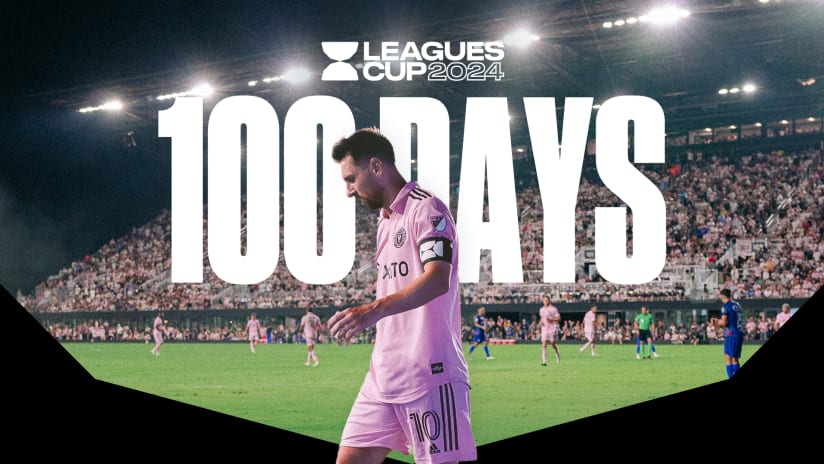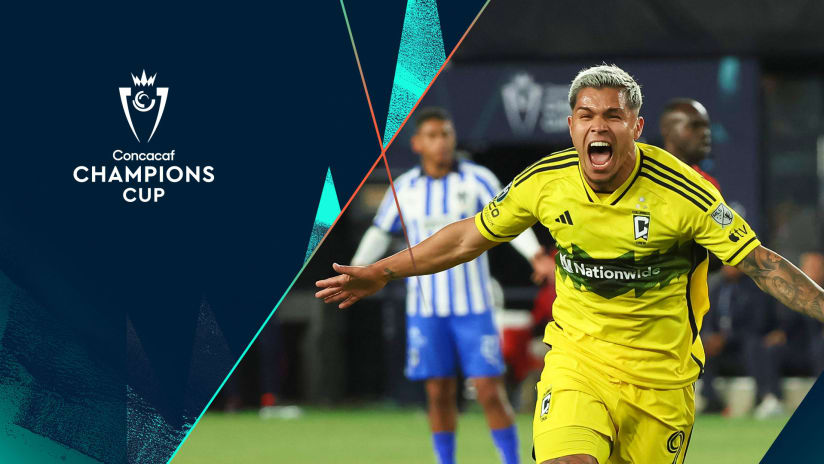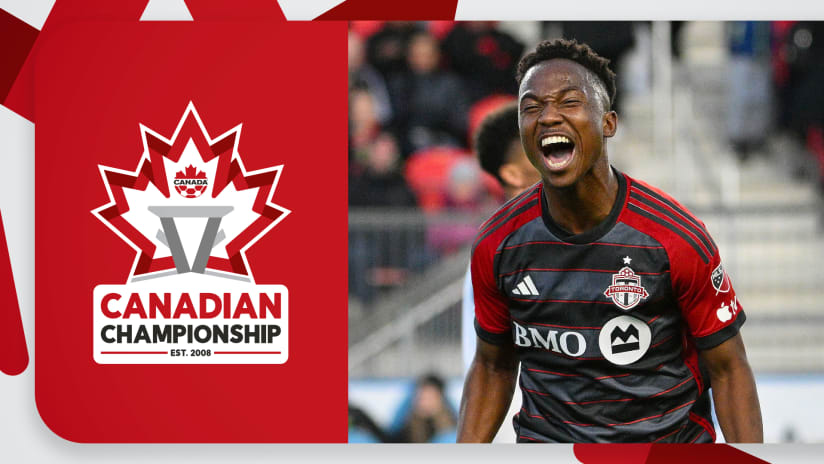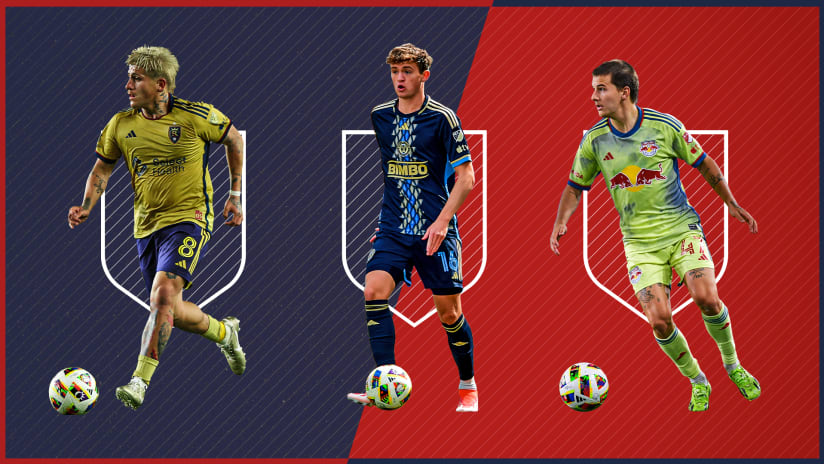Last week, Gyasi Zardes made his first MLS start in 226 days and helped the LA Galaxy to a 2-0 win over the Montreal Impact. While he only had 22 touches, he provided the assist on Jermaine Jones' game-clinching goal in the 74th minute. Zardes played as a central striker in what Opta described as a 4-4-2, paired with Giovani dos Santos. Throughout his career, Zardes has played as both a central and wide attacking option, and his "best" position has been the subject of much debate.
US national team head coach and former Galaxy head man Bruce Arena has experience working with Zardes and had this to say about his role in January: "He's been a midfielder with the national team, and that is likely where he's going to be playing with us as well. I know at the same time he'll likely play the No. 9 position for the LA Galaxy this year. Gyasi's versatility makes him very valuable, and I think he's a lot like [Jordan] Morris in that regard that they can both play as strikers and outside midfield positions.”
Arena used Zardes both centrally and wide during his tenure with the Galaxy, and taking a look at every MLS regular season game Zardes started, you can see he has played many games on the wing and up top. The Galaxy's results when he has played those two positions is interesting.
When Zardes starts up top, the Galaxy's record is 27-11-17, for an average of 1.78 points per game and a 49.1 percent winning percentage. When Zardes starts in a wide role, the Galaxy's record is 19-11-9, for an average of 1.69 PPG with a 48.7 percent winning percentage. These numbers only reflect the position Zardes started the game in, and not the possibility of a mid-game switch. Nonetheless, they enrich the conversation about where Zardes should play.
Indeed, it is worth noting that the 1.78 PPG the Galaxy have averaged when Zardes starts up top would have been good for a Supporters' Shield in three of the last four years, if the average held up for a 34-game season. The 1.69 ppg they have averaged when Zardes starts in a wide role isn’t a number to balk at either, and would be good for about 57 points over the course of a 34-game season. The Galaxy have clearly been good, regardless of where Zardes plays. Furthermore, it's clear the Galaxy are better when Zardes is on the field: since his MLS debut, Zardes has played 9,256 regular season minutes, and the Galaxy have averaged 1.7 goals per 90 minutes played. He has missed 4,271 minutes of league action, and the LA goals per 90 number drops down to 1.3 without him.
Diving deeper, we can see that Zardes’ individual numbers indicate slightly more productivity when he plays centrally.
Position |
Goals+Assists Per 90 |
Touches Per 90 |
Shots Per 90 |
LA PPG |
|---|---|---|---|---|
Winger |
.42 |
49.8 |
1.7 |
1.69 |
Striker |
.57 |
41.7 |
2.6 |
1.78 |
Zardes gets more touches per game when he starts wide, but he takes more shots, and scores at a much higher clip when he starts centrally. In both starting positions he averages more than 0.4 goals plus assists per 90 minutes played, but his production increases by .15 when he is a central attacker.
Historically, it appears the team and player are better off when he plays up top. We can also look at this iteration of the LA Galaxy and how Zardes might best contribute to Curt Onalfo’s squad. Five games into the Onalfo era, it appears that LA will play with a back four, two central midfielders and four attackers. For the most part, Opta has classified them as playing a 4-4-2 system. Prior to Zardes being fit enough for selection, Jack McBean had started three of the four games for the Galaxy with a three-player combination chosen from dos Santos, Romain Allessandrini, Sebastian Lletget (now injured) and Emmanuel Boateng.
Onalfo seemingly wants to play with a central attacking pair while trusting skillful, creative players on the flanks as well, with Boateng expected to hold the width on the left side and Allesandrini given license to roam further inward from the right.
pic.twitter.com/TGuGscPHky — MLSclips (@MLSgamefilm) April 14, 2017
In the clip above, Allesandrini drifts inward and an overlapping Nathan Smith provides the width on the right. While it doesn’t result in the best shot for LA, it is a good example of the movement Onalfo seems to be asking for from his team in the final third.
With dos Santos playing through the middle, it seems fairly logical to have a stronger, more athletic player alongside him to stretch the opposition center backs and create space between the lines for dos Santos to operate in.
pic.twitter.com/PkEpURFSRY — MLSclips (@MLSgamefilm) April 14, 2017
Dos Santos starts from deep and gets underneath Zardes, who occupies the center back and lays the ball off, creating a clear path to a shot on target.
In theory McBean’s size means that he could fulfill that role. While he is still only 22 years old, he hasn’t registered a shot on target in an MLS game since October 2013. Compare that potential slot in the current Galaxy system with the players out wide: even with Lletget hurt, the Galaxy have Boateng (one goal and two assists in his last three games) and Allessandrini (ranks in the top 10 in the league in combined goals and assists so far this season). Playing centrally seems to be the obvious choice for Zardes right now.
While Arena has declared that Zardes is a midfielder for the national team, his strike rate of 0.46 goals per 90 when he starts centrally compares fairly well with other USMNT players playing in MLS since 2013.
Player |
Goals Per 90 |
|---|---|
Zardes as striker |
.46 |
Altidore |
.61 |
Dempsey |
.51 |
Wondolowski |
.46 |
Morris |
.36 |
On top of that, the fluidity of the game and his combination of athleticism and technique means that he finds plenty of time to drift wide as well.
pic.twitter.com/svSd7S6q4U — MLSclips (@MLSgamefilm) April 14, 2017
Zardes makes an inside-to-out run and delivers an excellent ball with his left foot. How many of the league’s best scorers are also capable of drifting wide and delivering that ball with their left foot?
Later, Zardes displays an athleticism and ability in 1v1 that few players in the league possess.
pic.twitter.com/DzoQV1g2fj — MLSclips (@MLSgamefilm) April 14, 2017
He chases a "no hope" ball to the corner flag, digs it out, and beats Laurent Ciman before choosing to consolidate the Galaxy attack and recycle possession. How many players in the league are capable of chasing that ball down and then casually beating arguably the league’s best 1v1 defender?
Zardes produces more and the Galaxy have fared better when he starts in a central striking role. Furthermore, the current Galaxy roster basically begs for Zardes to play as a No. 9, and we see in the film that he is capable of making plays that few other players in MLS can match. If he can remain healthy and get a consistent run in the central role, this could be the season Zardes becomes an elite MLS striker. Onalfo and the Galaxy are certainly hoping he does, starting with Saturday's game against Orlando City SC (2:30 pm ET; FOX in US | MLS LIVE in Canada).
Matt Pavlich is a youth soccer coach in the New York City area who holds a NSCAA Advanced National badge. He is the Assistant Coaching Director, Recruitment Coordinator and Girls 2002 head Coach at Asphalt Green Soccer Club, and boys assistant coach at Martin Luther King high school. He has worked for Opta since 2011, primarily focused on MLS. He also played varsity soccer at Vassar College, where he could fairly be described as mediocre.













